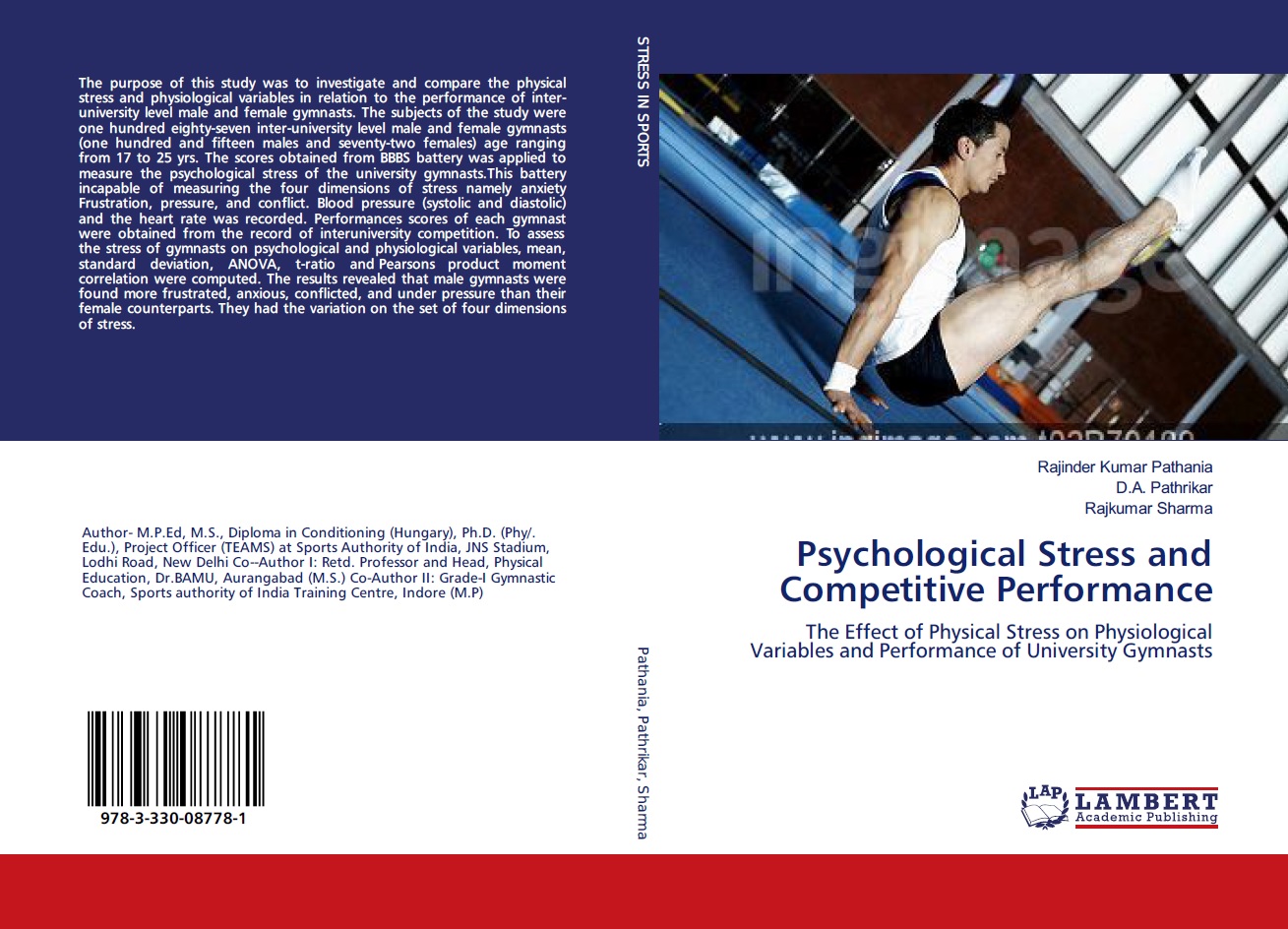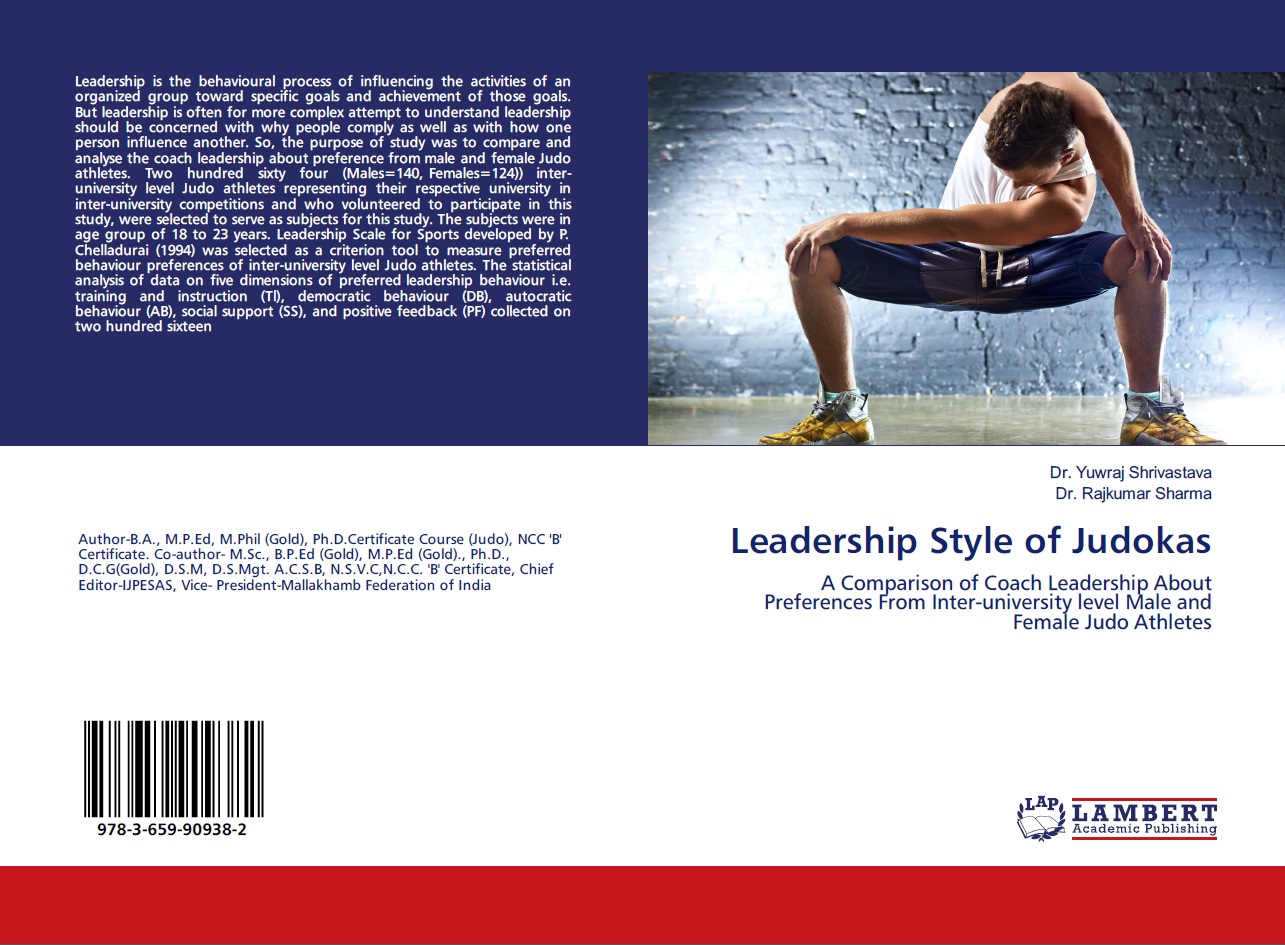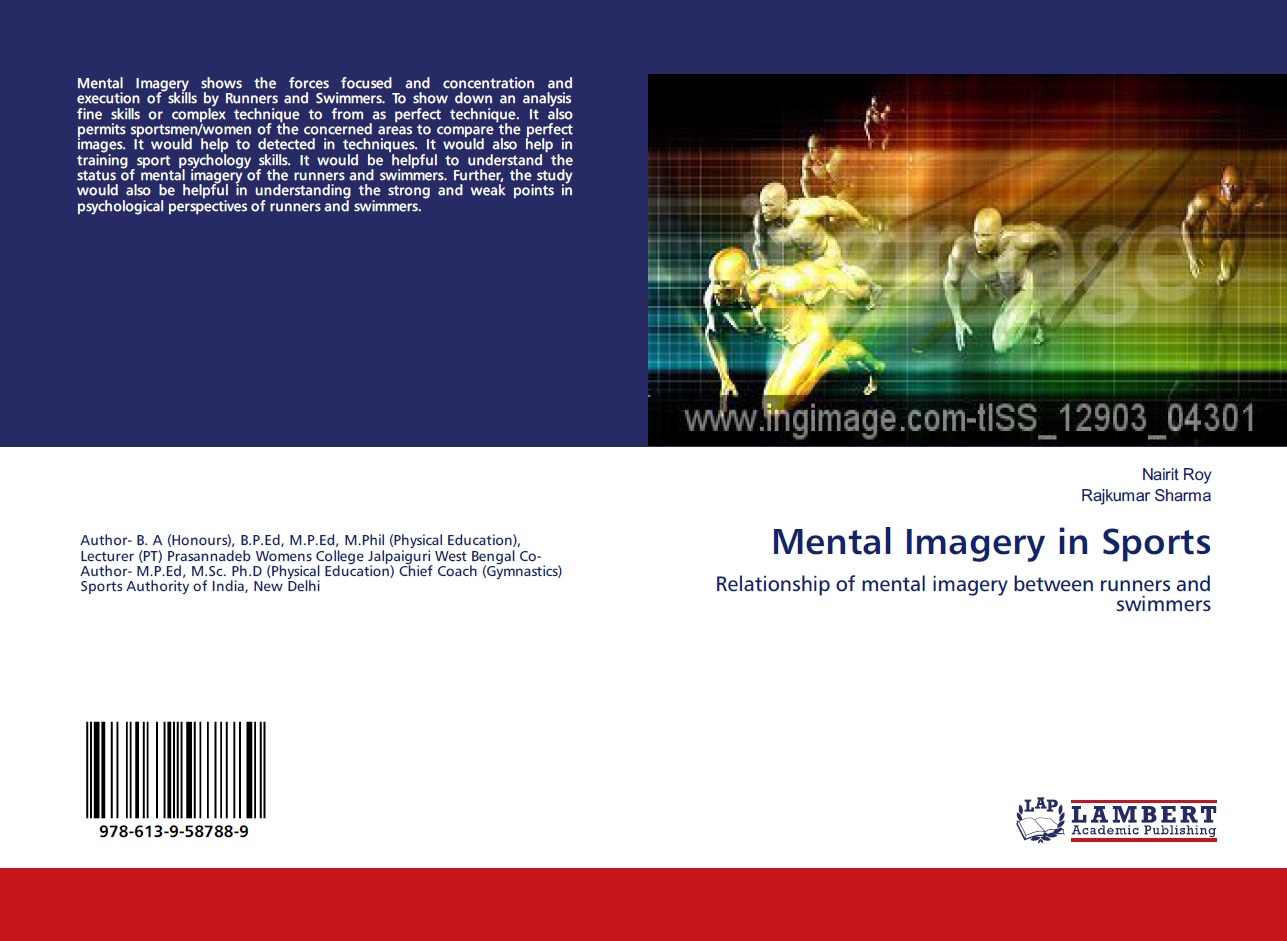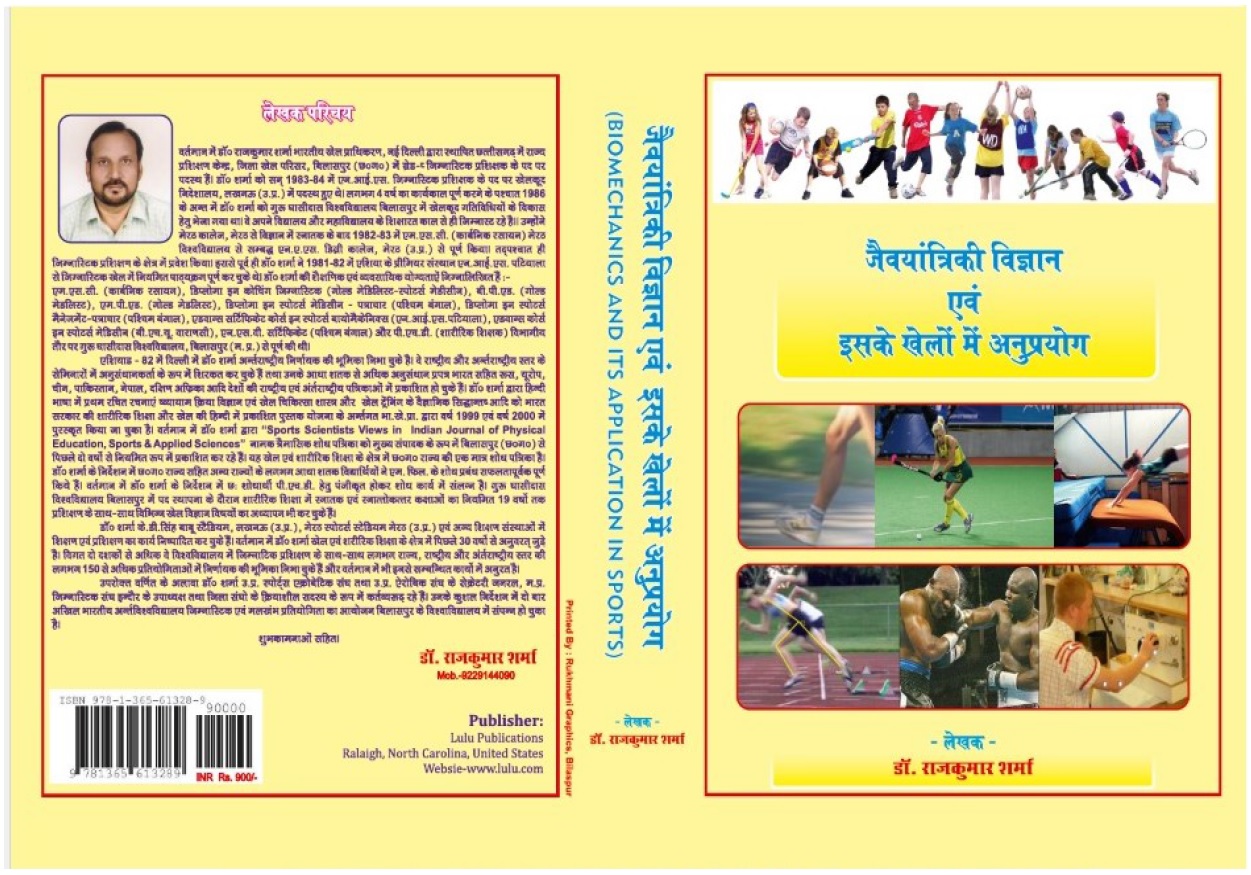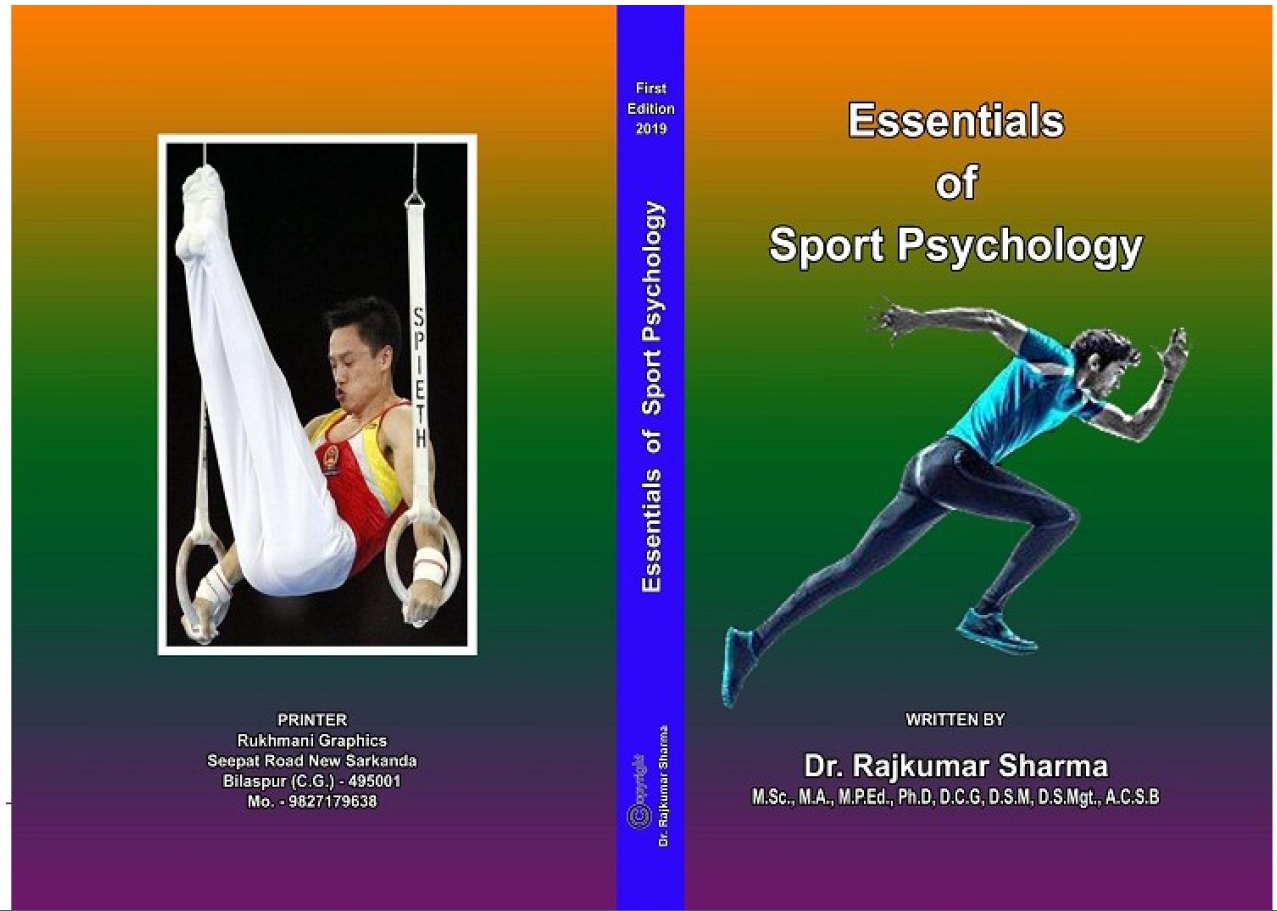| S.No. | Total View Count | Title of Manuscript | Page No | Download/ PDF |
|---|---|---|---|---|
| 1 | HEALTH-RELATED PHYSICAL FITNESS AMONG INDIAN HIGHER SECONDARY SCHOOL CHILDREN Author: Dr. Ashish Kumar Nigam1 | 50-61 |  7 7 |
Article info
doi no.: 05-2016-44975451; https://doi-ds.org/doilink/04.2024-54329775/IJPESAS/V13/NO.2/APRIL-2023/A7
AFFILIATIONS:
1. Sports Officer, Dean, Student Welfare, J.N.K.V.V.Jabalpur (M.P.) Mobile- 9826348748, Email-dr.aknigam@gmail.com
The main aim of the study was to assess the heath-related physical fitness in Indian school children. For this purpose, a cross sectional purposive sample of 437 male children into seven age groups i. e. 12 (N=63), 13(N=59),, 14(N=63),. 15(N=63),, 16(N=63),, 17(N=63) and 18(N=63) years belong to middle (N=215) and higher secondary (N=222) schools. The random sampling method was employed for the purpose of data collection from various schools running in the tribal region of Sarguja division in the state of Chhattisgarh. For estimated body fat percentage of an individual, two skin-fold sites i.e. triceps and sub-scapular were measured by standard Skin-fold Caliper of all the male subjects in millimeters. The measurements were made while the children were wearing light clothes and no shoes. Health-related physical fitness was assessed through the sit-and-reach test for flexibility, modified sit-ups test in one-minute for strength/muscular endurance and nine-minute running/walking test for cardio-respiratory endurance. The subjects were tested within one month of their birthdays. All the subjects were tested in AAHPER health related fitness test items i.e. 1.5 mile run, modified bent knee sit-ups for one minute, sit and reach test and triceps and sub scapular skin folds to collect the data on cardiovascular endurance, strength and endurance of abdominal muscles, flexibility of back and hamstring muscles and amount of fat. From this study, it was concluded that the health related fitness of boys of twelve to eighteen years of age of Sarguja division declined in all age groups on flexibility with advancement of age except fifteen years of age and inclined in all age groups on abdominal strength/muscular endurance and body composition with advancement of age. Which, possibly, may be attributed to the lack of physical activity after the age of fifteen years. They unproved in cardio-respiratory function at twelve to fourteen years of age and later on, they improved significantly up to the age of eighteen years with some fluctuations in time.
Keywords: Health related physical fitness, tribal, school children, Body Mass Index.
References
Andreia Pelegrini, Diego Augusto Santos Silva, Edio Luiz Petroski, Maria Fátima Glaner, Health-related physical fitness in Brasilian school children: data from the Brazil sport program Rev Bras Med Esporte .17 :.2 Sao Paulo Mar./Apr. 2011
AAHPERD (1980). Health related physical fitness test manual. Reston, VA, American Alliance for Health, Physical Education, Recreation and Dance
Bandyopadhyay, A. and Bandyopadhyay, P. Cardio-respiratory Fitness in College Students of Uttar Pradesh, India Journal of Exercise Science and Physiotherapy, Vol. 3, No. 1: 44-47, 2007
Behnke, Albert A and Wilmore, Jack H. (1974). "Evaluation and Regulation of Body Build and Composition. Englewood Cliffs, N.J. : Prentice-Hall, Inc., P. 130.
Bouchard C. Heredity and health-related fitness. Pros Coun Phys Fitness Sports Res Dig 1993;November:1-4.
Cureton Kirk, J. and Warren, Gordon L. "Criterior Referenced Standards for Youth Health-Related Fitness Level : A Tutorial" Researdch Quarterly for Exercise and Sport 61:1 (March, 1990) : 7-19
Campbell W.R. & Pohndof, R.H. (1961) Physical fitness of British and American children. In: Health & Fitness in the modern world.Athletic Institute, Chicago.
Council of Europe (1983). Testing physical fitness: Eurofit.Experimental battery provisional handbook, Strasbourg,Council of Europe
Dragan Cvejic, Tamara Pejovic, Sergej Ostojic Assessment of physical fitness in children and adolescents Facta Universitatis Series: Physical Education and Sport Vol. 11, No2, 2013, pp. 135-145
Dutt, Sunil Health Related Physical Fitness of Boys Aged 8 to 18 Years, Ph.D. Journal of Exercise Science and Physiotherapy, Vol. 1, No.1 & 2: 12-22, 2005
Fazel Bazyar, Ramin Shabani, differences in health-related physical fitness status among elementary school girls in Croatia. Annals of Applied Sport Science, 2 (4) (2014) :23-32
Guedes DP, Guedes JERP, Barbosa DS, Oliveira JA. Habitual physical activity and health-related physical fitness in adolescents] Rev Bras Cienc Mov. 2002;10:12–21
Hoekstra T, Boreham CA, Murray LJ, Twisk JWR. Associations between aerobic and muscular fitness and cardiovascular disease risk: The Northern Ireland Young Hearts Study. J Phys Act Health 2008;5:815-29.
Haywood, K.M; Clarke, B.A.and Mayhew, J.L. "Differential Effects of Age-group Gymnastics and Swimming on Body Composition, Strength and Flexibility", Medicine and Physical Fitness. 26 : 4 (Dec. 1986) : 420
Ishiko, T. (1978) Merits of various standard test protocols-a comparison between ICPER, WHO and IBP and other groups. In: Physical Fitness-Principles, Practice and Application. Ed: R.J. Shephard and H. Lavallee Charles C. Thomas Publisher, Springfield. 7-17.
ICMR, (1989) Growth and physical development of Indian infants and children. Technical Report Series No 18, New Delhi: Indian Council of Medical Research
Kumar, Ajay and Sathe Vivek, "Relative Effect of Health-related Fitness on Sports Proficiency of Student of Physical Education" Cited by Shukla, N.B. Recent Trend in Physical Education and Sports. Varanasi : Shri Shankar Press, 1999 P.6.
Kwon S, Bums TL, Janz K. “Associations of cardio-respiratory fitness and fatness with cardiovascular risk factors among adolescents: The NHANES 1999-2002”. Journal of Physical Activity and Health 7 ( 2010) :746-753.
Knuttgen, H.G. (1961) Comparison of fitness of Danish and American schoolchildren. Research. Quarterly., 32: 190-196.
Mossberg, H. Forty year follow up of overweight children. Lancet, ( August, 1989) : 491- 493.
Myers J, Kaykha A, George S, Abella J, Zaheer N, Lear S, Yamazaki T, Froelicher V. “Fitness versus physical activity patterns in predicting mortality in men”. American Journal of Medicine 117 ( 2004) :912-918.
Moreira C, Santos R, Farias Junior JC, Vale S, Santos PC, Soares-Miranda L, Marques AI, Mota J. “Metabolic risk factors, physical activity and physical fitness in Azorean adolescents: A cross-sectional study”. BMC Public Health 11 (2011)::214
Moliner-Urdiales D, et al. Secular trends in health-related physical fitness in Spanish adolescents:. Journal of Science and Medicine in Sport (2010), doi:10.1016/j.jsams.2010.03.004
Marques-Vidal P, Ferreira R, Oliveira JM, Paccaud F. “Is thinness more prevalent than obesity in Portuguese adolescents”? Clinical Nutrition. 27:4 (2008):531-536.
Malina R. M, Beunen GP, Claessens AL, Lefevre J, Eynde BV, Renson
R, Vanreusel B, Simmons J. “Fatness and physical fitness of girls 7-17 years”. Obesity Research. 3 (1995) :221-231.
Muhammad, Alnadd of, Abdelsalam. "Comparison of Health related Fitness Components Among. Athletes of Various Sports" Dissertation Abstracts International 58:12 (June, 1998) : 4596-A.
Nelson, J.K. and Dorociak J.J. “Reducing administration time while improving reliability and validity of fitness tests Journal of Physical Education, Recreation” 53:1 (1982): 63-66.
Ortega FB, Ruiz JR, Castillo MJ, Sjostrom M. “Physical fitness in childhood and adolescence: a powerful marker of health”. International Journal of Obesity 32 (2008):1-11.
Powell KE, Roberts AM, Ross JG, Phillips MAC, Ujamaa DA, Mei Zhou, MA. “Low physical fitness among fifth- and seventh-grade students, Georgia, 2006”. American Journal of Preventive Medicine 36 (2009) :304-10.
Plowman SA. “Physical activity and physical fitness: weighing the relative importance of each”. Journal of Physical Activity and Health 2 (2005):143-58.
Pate RR. “Relationships between skin-fold thickness and performance of health-related
fitness test items”. Research Quarterly for Exercise and Sport. 601(989) :183-189.
Pejcic A, Zvan M, Krstulovic S. “Relationships between muscular strength,
anthropometric characteristics and motor abilities in children 11-12 years of age”.
Kinesiologia Slovenica 10 (2004):48-56.
Plowman AS, Sterling CL, Corbin CB, Meredith MD, Welk GJ, Morrow JR. “The history of Fitnessgram” . Journal of Physical Activity and Health, 3 :2 2006:S5-20.
Ruskin, H. Physical performance of schoolchildren in Israel. In: Physical Fitness Assessment-Principles, Practice and Application. Ed: R.J. Shephard and H. Lavallee, Charles C. Thomas Publisher, Springfield, 1978, 273-320
Ruiz, J.R., Ortega, F.B., Gutierrez, A., Meusel, D., Sjöström, M., & Castillo, M.J. “Health-related fitness assessment in childhood and adolescence: a European approach based on the Avena, Eyhs and Helena studies”. Journal of Public Health, 14:5 (2006a) :269-277
Ruiz, J.R., Castro-Piñero, J., Artero, E.G., Ortega, F.B., Sjöström, M., Suni, J., et al. “Predictive validity of health-related fitness in youth: a systematic review”. British Journal of Sports Medicine, 43 :12 (2009): 909-923
Sourenson, T. I. A. and Sonne-Holm, S. “Risk in childhood of development of severe obesity: retrospective population based case-cohort study”, American. Journal of Epidemiology, 127 (1988) : 104-113.
Serdula, M.K., Ivery, D., Coates, R. J., Freedman, D.S.,Williamson, D.F. and Byers, T. “Do obese children become obese adults-a review of literature”. Preventive. Medicine, 22 (1993): 167-177
Sharma, K.M. (2003) “ A Normative Study of Health related Physical Fitness in School Children of Baster Division’ Unpublished Doctoral Thesis, Guru Ghasidas University, Bilaspur, Chhattisgarh, 2003.
Sloan, A.W. Physical fitness of south African compared with British and American high school children. South African Medical Journal,40 (1966): 688-690.
Saha, G.C. & Haldar, S. Comparison of Health Related Physical Fitness Variables And Psychomotor Ability between Rural and Urban School Going Children Journal of Exercise Science and Physiotherapy, 8 :2 (2012): 105-108.
Shephard, Roy J; Berridge, Mavis and Montelpau William "On the Generality of the " Sit and Reach" Test: An Analysis of Flexibility Data for an Aging population" Research Quarterly for Exercise and Sport 61:4 (December, 1990):326
Taylor W, Baranowski T. ”Physical activity, cardiovascular fitness, and adiposity
in children”. Research Quarterly for Exercise and Sport. 62 (1991:157-163
Tarandeep; Singh, Rachhpal and Kanchan “Comparison of health related physical fitness components between urban and rural primary school children”. International Journal of Business & Management Research. 2 :5 ( 2012): 187-192
Williams PT. Physical fitness and activity as separate heart disease risk factors: a meta-analysis. Med Sci Sports Exerc 2001;33:754-61.
 admin@sportscientistsviews.com
admin@sportscientistsviews.com

